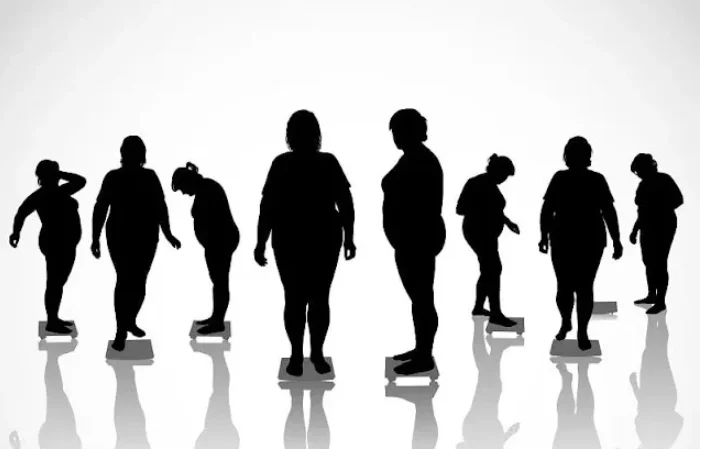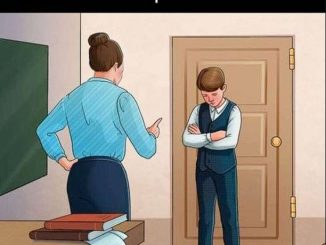Obesity is a complex issue with various underlying causes, and no single approach works for everyone. Understanding where your body stores fat can help you adopt the right strategies for weight management.
Recent research has categorized obesity into distinct groups, shedding light on why different people require different treatment approaches. A study published in the Journal of Public Health examined 4,000 obese adults and classified them into six categories:
The Six Types of Obesity
- Healthy Young Women – Obese but with minimal health complications like type 2 diabetes.
- Heavy Drinkers – Similar to the first group but characterized by high alcohol consumption.
- Middle-Aged Individuals with Anxiety and Depression – Primarily women in their fifties who struggle with mental health issues.
- Older, Wealthy, and Generally Healthy Individuals – Despite obesity, they maintain good health but may experience high blood pressure and consume more alcohol.
- Older Individuals with Physical Ailments but Positive Mental Health – Suffer from chronic conditions like osteoarthritis but remain mentally well.
- Individuals with Poor Overall Health – Often facing financial struggles and multiple chronic diseases.
This classification highlights the need for personalized weight management strategies. While this is a significant step forward, further research is needed to refine treatment approaches.

Body Fat Distribution: Android vs. Gynoid
Fat distribution patterns vary by gender and genetics:
- Android Fat Distribution – More common in men, leading to an “apple-shaped” body with excess fat around the abdomen.
- Gynoid Fat Distribution – More common in women, resulting in a “pear-shaped” body with fat stored around the hips and thighs.
Types of Obesity and How to Address Them
1. Upper Body Obesity (Android)
Cause: Excess calorie intake and lack of exercise.
Solution: Reduce sugar consumption and engage in at least 30 minutes of daily physical activity. Consulting a healthcare professional can be beneficial.
2. Stomach Obesity (Android)
Cause: Stress, anxiety, or depression.
Solution: Manage mental health through relaxation techniques and regular exercise. Seeking professional guidance may help.
3. Lower Body Obesity (Gynoid)
Cause: More common in women due to hormonal factors.
Solution: Incorporate lower-body resistance training and cardiovascular exercises. Since this type of fat can be stubborn, professional support may be helpful.
4. Swollen Belly (Android)
Cause: Excessive alcohol consumption or breathing issues.
Solution: Reduce alcohol intake and practice proper breathing exercises.
5. Lower Body Obesity Extending to the Lower Legs (Gynoid)
Cause: Common in pregnant women, leading to swelling.
Solution: Water aerobics and elevating the legs can reduce discomfort.
6. Large Protruding Belly with Upper Back Fat (Android)
Cause: Inactivity and unstable blood sugar levels.
Solution: Increase physical activity and maintain stable blood sugar through small, frequent meals.
The Importance of Identifying Your Obesity Type
Recognizing where and why your body stores fat can help you create a personalized weight-loss strategy. By addressing the root causes—whether they stem from diet, lifestyle, or mental health—you can take meaningful steps toward long-term wellness.
Matt Heath: My parting message: Enjoy things while they are around

A lot of big, tragic and important things have happened to this wonderful country of ours since April 2014. None of which I have covered. I was too busy writing about hungover parenting, ancient philosophy and my dog Colin.
Out of the 536 columns I have written, 27 were about that guy. Far too few. He is such a good boy, he deserves an article a week.
Today is the end of an era for me, and whenever these final events pop up in our lives, we can’t help but think about the ultimate end.
Everything we do, we will one day do for the last time. That’s why you have to enjoy things while they are around. It’s not just big events like leaving a job, house or loved one either. Whatever moment you happen to be in now, you will never get it back, and you don’t know how many more you have.
Everything we do in life, from eating pizza to spending time with the people we love, to driving, writing, drinking or breathing, we will one day experience for the final time. It might happen tomorrow. This can be either a depressing or an inspiring thought, depending on how you look at it.
A few years back in this column, I interviewed professor of philosophy William B Irvine, of Wright State University, Ohio, on this very topic. He put it this way on a Zoom call: “Recognition of the impermanence of everything in life can invest the things we do with a significance and intensity that would otherwise be absent. The only way we can be truly alive is if we make it our business periodically to entertain thoughts of the end.”
Today’s column is very meaningful to me because it is my last. Like the last night with a lover before she goes overseas. And just like a lover, there have been some half-arsed efforts put in from me over the years. Last week, for example, I spent 750 words moaning about how bad my cricket team is. But the truth is that any of my columns could have been the final. If I had reminded myself every week for the past 10 years that the end is inevitable, I may have been more grateful for having a column and appreciated writing them all as much as I am this one.
While everything we do could have more meaning with a focus on finitude, some things are inherently more worthwhile than others. There is no doubt my column “The pros and cons of wearing Speedos” from November 2022 was less meaningful than most things in this world. That was a waste of everyone’s time. So, if we only have so much time, how do we pick the best things to do?
Well, Oliver Burkeman, the author of Four Thousand Weeks – Time Management For Mortals, suggested this to me in a 2022 column: “Ask yourself, does this choice enlarge me? You usually know on some unspoken level if it does. That’s a good way to distinguish between options.”
With that in mind, I don’t feel great about my 2018 article on “New Zealand’s best hole”. That didn’t enlarge anyone.
There will be people reading this column right now who have loved my writing in the Herald and are sad to see it end. Others will have hated it and are glad to see me go. Many won’t have any opinion at all. But for those in the first camp, I have good news. I have a book coming out on May 28 called A Life Less Punishing – 13 Ways To Love The Life You Got (Allen and Unwin Book Publishers). It’s a deep dive into the history, philosophy and science of not wasting our time lost in anger, loneliness, humiliation, stress, fear, boredom and all the other ways we find to not enjoy perfectly good lives. It’s available for pre-order right now (google it if you’re interested).
A Life Less Punishing took me two years to write and is equivalent in words to 100 of these columns. Which would be a complete nightmare for those in the hate camp, but as I say, great news for those who want more.
Anyway, thanks to the Herald for having me, thanks to the lovely people who make an effort to say nice things to me about my column nearly every day and thanks to the universe for every single second we get.
Bless!



Leave a Reply